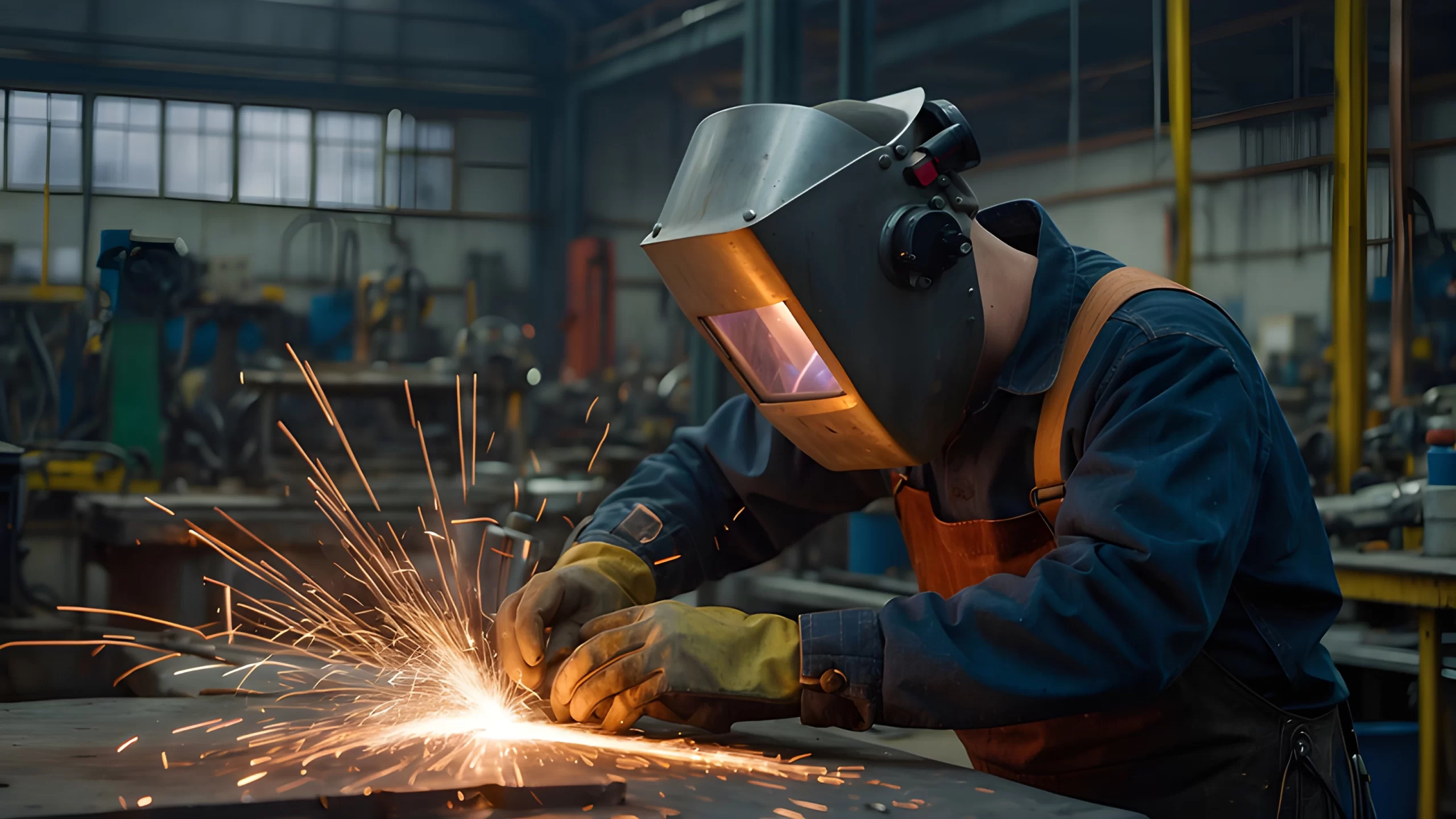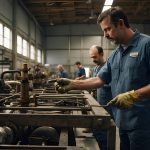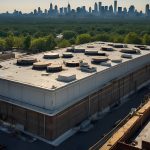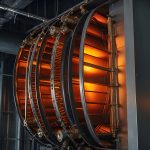
After nearly a decade in the sheet metal fabrication business here in Kearny, New Jersey, I’ve seen countless contractors struggle with the same challenge: finding a reliable partner who understands the difference between automated and manual welding services and when to use each. As someone who’s worked with HVAC contractors, builders, and facility managers across the tri-state area since 2015, I’ve learned that choosing the right welding approach can make or break your project timeline and budget.
Furthermore, the reality is that most contractors don’t have time to become welding experts—they need a fabrication partner who already is. That’s why we’ve invested heavily in both cutting-edge automated systems and skilled manual welders at HVAC Metals LLC, ensuring we can tackle any project that comes through our doors.
Understanding Automated and Manual Welding Services for HVAC Projects
When I started this business, I quickly realized that successful contractors need more than just someone who can weld—they need a partner who understands which welding method delivers the best results for each specific application. Consequently, we’ve built our reputation by mastering both automated and manual welding services, allowing us to optimize every project for speed, quality, and cost-effectiveness.
Automated welding systems excel at repetitive tasks with consistent specifications. Meanwhile, manual welding remains irreplaceable for complex geometries, field modifications, and specialty applications. The key is knowing when to deploy each method to maximize your project’s success.
The Advantages of Automated Welding Services in Custom Ductwork
Last month, we completed a large commercial project for a mechanical contractor in Newark who needed 200 identical duct transitions by Friday morning. Using our automated welding systems, we delivered them Thursday evening—something that would have taken days with manual welding alone. Additionally, every piece was identical in quality and appearance, eliminating the variations that can cause installation headaches.
Here’s what automated welding brings to your HVAC projects:
- Consistent quality: Every weld meets the same exact specifications
- Faster production: Ideal for high-volume, repetitive components
- Reduced labor costs: Lower per-unit costs on large runs
- Improved scheduling: Predictable production times you can count on
However, automated systems work best with standardized designs and materials. Therefore, we typically recommend this approach for ductwork runs, standard fittings, and any project where you need multiple identical pieces.
When Manual Welding Services Deliver Superior Results
Not every job fits into an automated workflow, and that’s where our skilled manual welders prove their worth. Recently, a facility manager in Philadelphia called us with an emergency repair on a custom exhaust system with unusual angles and clearance issues. Our manual welding expertise saved the day, creating a perfect fit where automated systems would have struggled.
The Precision of Hand-Crafted Welding Solutions
Manual welding services shine in situations requiring adaptability and craftsmanship. For instance, when you’re dealing with retrofit work, unusual specifications, or one-off custom pieces, nothing beats the problem-solving ability of an experienced welder who can adjust their technique in real-time.
Our manual welding services excel in these scenarios:
- Complex geometries: Unusual angles, curves, and custom shapes
- Field modifications: Adjustments based on actual site conditions
- Material variations: Working with specialty alloys or mixed materials
- Repair work: Matching existing systems and structures
Moreover, our welders bring decades of experience to every project. They understand that your reputation depends on the quality of our work, so they take pride in delivering welds that not only meet specifications but exceed your expectations.
Optimizing Project Success with Combined Automated and Manual Welding Services
The real magic happens when we combine both approaches strategically. For example, we recently worked with a general contractor on a mixed-use development in Hoboken. We used automated welding for the standard ductwork runs throughout the residential floors, then switched to manual welding for the complex commercial kitchen exhaust systems on the ground floor.
This hybrid approach delivered several key benefits:
- Cost optimization: Automated production for standard components kept costs down
- Quality consistency: Manual work ensured perfect fits for complex areas
- Schedule efficiency: Both processes ran simultaneously, meeting tight deadlines
- Problem prevention: Reduced callbacks and installation issues
Furthermore, our advanced fabrication technology allows us to seamlessly transition between automated and manual processes as your project demands. This flexibility is what separates professional fabrication shops from basic welding services.
Quality Control in Both Automated and Manual Welding Services
Regardless of which welding method we use, our quality control process remains rigorous. Every weld gets inspected, every dimension gets verified, and every piece gets tested before it leaves our shop. In addition, we understand that your projects can’t afford surprises, so we build quality checks into every step of our process.
We’ve also learned that communication is crucial. That’s why we keep you updated throughout production and can adjust our approach if site conditions change. Whether you need custom HVAC ductwork or specialty fabrication, we’re equipped to deliver exactly what your project requires.
Choosing the Right Welding Partner for Your Next Project
After working with hundreds of contractors across New Jersey, New York, and Pennsylvania, I’ve seen how the right fabrication partner can transform your project outcomes. The contractors who consistently win bids and complete projects on time are the ones who partner with shops that understand both the technical and business sides of welding services.
At HVAC Metals LLC, we’ve built our reputation on understanding your challenges. We know you can’t afford delays, quality issues, or suppliers who don’t show up when promised. That’s why we offer deliveries as early as 6 AM and maintain the equipment and expertise to handle both automated and manual welding services under one roof.
Whether you’re planning a large commercial installation or need emergency repairs, having a fabrication partner who can deploy the right welding method for each situation gives you a significant competitive advantage. Contact us at HVAC Metals LLC to discuss how our automated and manual welding services can support your next project’s success.
FAQs
What’s the main difference between automated and manual welding for HVAC projects?
Automated welding uses programmed machines for consistent, high-volume production of identical parts, while manual welding relies on skilled craftsmen for complex, custom, or one-off pieces. Automated excels at repetitive tasks, while manual welding handles unique geometries and field modifications better.
How do I know which welding service is right for my project?
Consider your project’s volume, complexity, and timeline. Large runs of standard ductwork benefit from automated welding’s speed and consistency. Custom fittings, repairs, or unusual specifications typically require manual welding’s flexibility and craftsmanship. Many projects benefit from combining both approaches.
Can you handle projects that require both types of welding?
Absolutely. We maintain both automated systems and skilled manual welders at our Kearny facility, allowing us to optimize each component of your project. This hybrid approach often delivers the best combination of cost-effectiveness, quality, and schedule performance for complex HVAC installations.
Written by: Arthur
HVAC Metals, LLC




